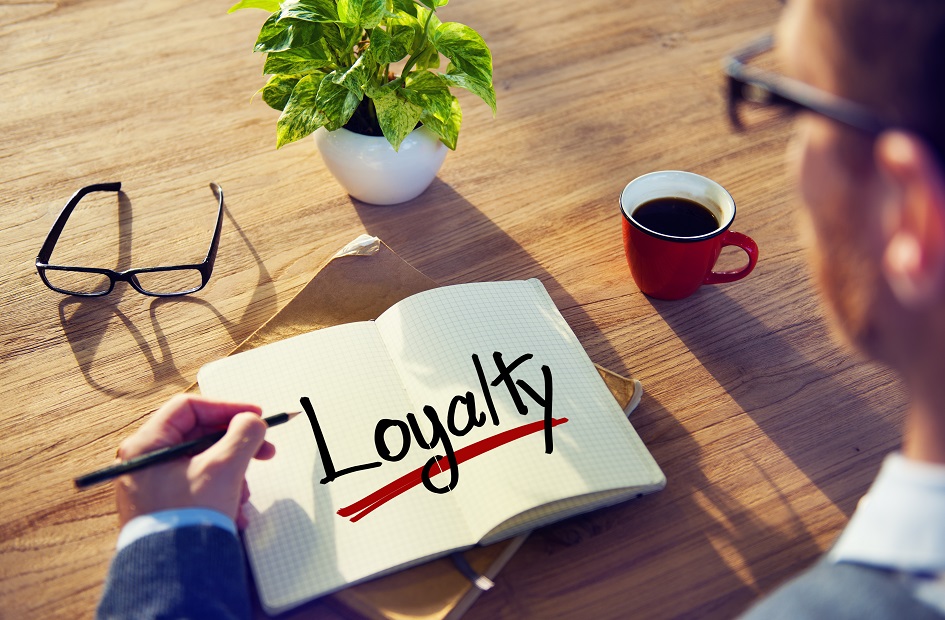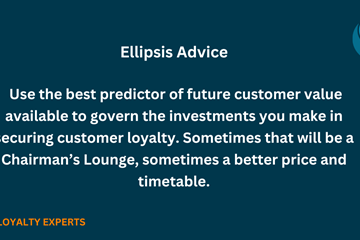Rethinking Loyalty, The Product Matters!

A recent industry article1 calls on us to rethink traditional loyalty marketing and shift focus from loyalty programs to customer experiences that build loyalty, using customer data from the increasing number of sources now available (even without a loyalty program in place). It got us thinking…
It was probably the conclusion that “…research has shown customer loyalty to be largely illusory, tied to other forces such as market penetration and sales volume…” that fired up the Ellipsis synapses, (one of our partners is an Arsenal supporter and is particularly loyal to their brand of football, no illusions involved).
Ask a Sydney Swans supporter to switch their support to the Giants for cheaper game tickets, better seats, ask a La Mer customer to save money by switching to generic skincare products, even ask a USAA customer to change their insurer for a 10% lower premium and I think you may find some evidence of loyalty.
Then ask a Tide customer to use a different national brand of washing powder, on price promotion, and I think you have a much better chance of demonstrating a lack of customer loyalty.
Seems to us that the category of products and services is relevant to any discussion of customer loyalty. Perhaps, and that true loyalty requires emotional engagement and the Marketing Laws we discussed in the last ON POINT apply best when there is little emotional connection to the product category, so transactional preference is the best you can hope for?
Since we are dealing with human variability, the lines will not be clearly drawn of course. In every category, there are a set of emotionally engaged customers immersed in the details of brands; you can find obsessed fans for almost any product if you search hard enough. But the proportion of a category’s buyers who are emotionally engaged with a specific brand varies. I remember a study that showed (from memory) even the toilet paper category has an emotional, brand specific connection with 7% of its buyers (and they are noisy; as Kleenex recently found when they changed the diameter but not length of their rolls).
It is probably true that marketers cannot easily change the typical level of emotional engagement that is ‘natural’ to your service/product category if it is well established. Companies like Dyson try and sometimes succeed.
But if you are in a category where the choice of brand matters, emotionally, to a large proportion of customers, what can you do that is different to increase awareness and distribution?
Engagement is another way of saying there is a relationship between your customers and your firm that has an emotional component, it is not just about the money. If sufficient customers are open to a relationship, modern marketing can methodically build them.
The Ellipsis Roadmap of Relationship Marketing
- Justify Investment: Make sure your customers are interested enough, in enough numbers, to justify investing in systematic loyalty marketing (perhaps with a program, perhaps not). Don’t use yourself as proof, look for existing empirical evidence!
- Understand Engagement: Look for significant differences in customer value. Are highly engaged customers in your category many times more valuable than light buyers? Is the difference in value enough to justify strengthening the relationship with these heavy buyers?
- Understand Relationships: Understand what creates relationships between people (as an indicator of what our marketing should be emulating). The psychologists tell us relationships are created through the mutual investment of cognitive resources of:
- Love
- Status
- Information
- Service
- Goods
- Money
These resources line up on two dimensions – they are increasingly ‘Tangible’, and they decrease in a quality called ‘Particularism’. Put simply, this means the resource varies in value depending on who gives it to you. ‘Have a nice day’ status from the hamburger server is less personally valuable than the same wish from your spouse. Particularly.The weakest relationships are formed by the exchange of anonymous, tangible resources; e.g. where everyone gets the same discount. The strongest relationships are formed by the investment of personalised, intangible resources; your favourite beauty adviser invites you to a free makeover with a new treatment she knows will suit you because she remembers your specific skin type. Customers repay intangible, personal investments in kind; with loyalty and recommendations.In a quirk of human nature the weakest relationships are often the cheapest to establish; discounts and ‘gifts with purchase’, to everyone.
- Establish a Strategy: Establish a strategy that will allow you to become particularist with your chosen customers (typically the high value ones). This requires time and memory because the customer will be looking for proof that you actually know them. This requires enough interaction for you to know who they are when you grant them status, so that it is not a hollow gesture. Airlines do a good job of this and their success at retaining frequent travellers indicates this works in a loyalty program setting. Trying to divorce high status frequent flyers from lounge access, priority boarding and special luggage tags is a tough challenge for rival airlines!
- Commit to the Journey: Note there is a natural lifecycle to relationship marketing, and it takes time. All customers start as strangers, so discounts and give-aways may be all you can do to attract them. As the relationship develops, continuing with tangible offers only sends the contra message that you are only interested in the transaction and have no real interest in them. No relationship on offer.
Loyalty in a ‘Big Data’ world
It’s certainly true that we should rethink loyalty in the era of ‘Big Data’. But just because new sources of insight can replace the need for loyalty programs as pure data collection vehicles, in some situations, this does not invalidate the importance of a carefully planned relationship marketing strategy. I suspect the challenge of increasing customer engagement is case of the blind men and the elephant:
“It was six men of Indostan
To learning much inclined,
Who went to see the Elephant
(Though all of them were blind),
That each by observation
Might satisfy his mind
And so these men of Indostan
Disputed loud and long,
Each in his own opinion
Exceeding stiff and strong,
Though each was partly in the right
And all were in the wrong”
(John Godfrey Saxe, 1816-1887)
That is, what marketers see as ‘the answer’ depends on which part of the metaphorical elephant they have hold of.
Sharp’s ‘Marketing Laws’ are very relevant for FMCG companies, marketing household brands at arms’ length through retail channels; but when you own the customer relationship, personalisation and relevancy are expected and essential. Similarly, ‘Big Data’ can provide very useful insights when you already know who your customers are, but many companies struggle with this initial challenge of customer identification and profiling.
So to conclude, choosing the right approach to customer-centricity, and building the right marketing strategy for your brand and customers, remains essential. Loyalty programs are important, but they are only part of a bigger and more complex picture, which continues to evolve every day.
Now for a bit of fun, view this clip – it has been around a while now but is still on the big-data money… for some categories. https://youtu.be/D3qltEtl7H8
We are Ellipsis, the Customer Loyalty Experts. We help businesses thrive through solving complex customer problems. Please get in touch, we’d love to talk.
References




